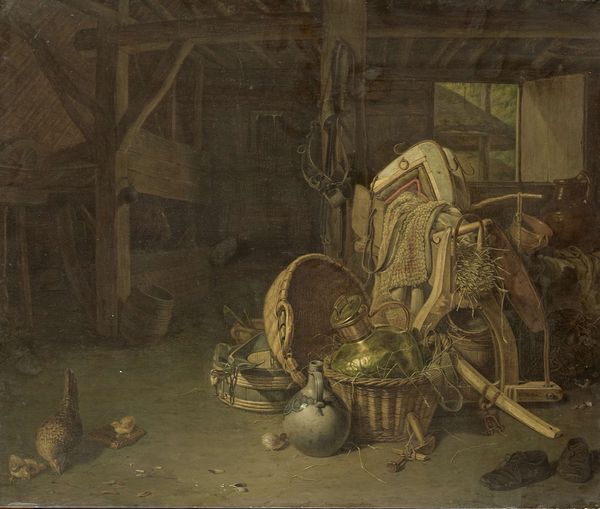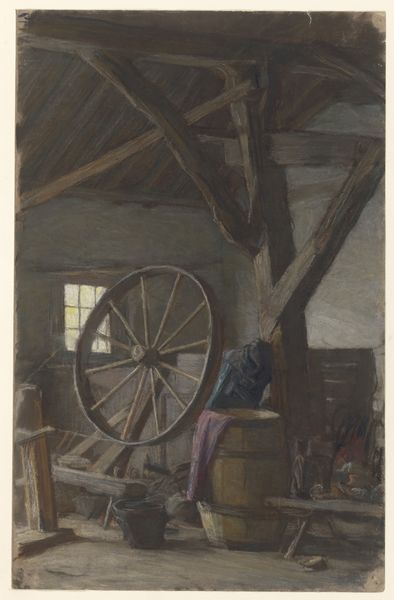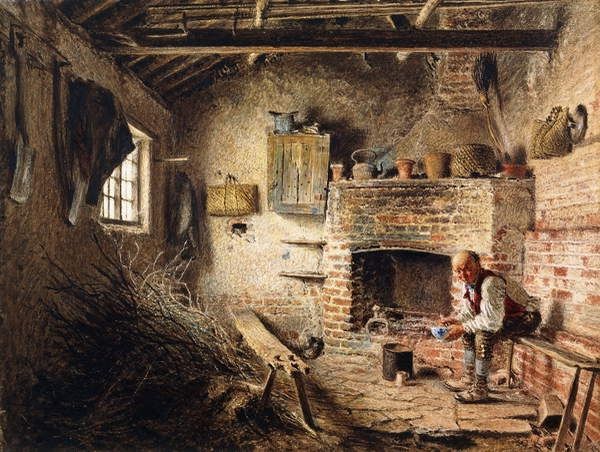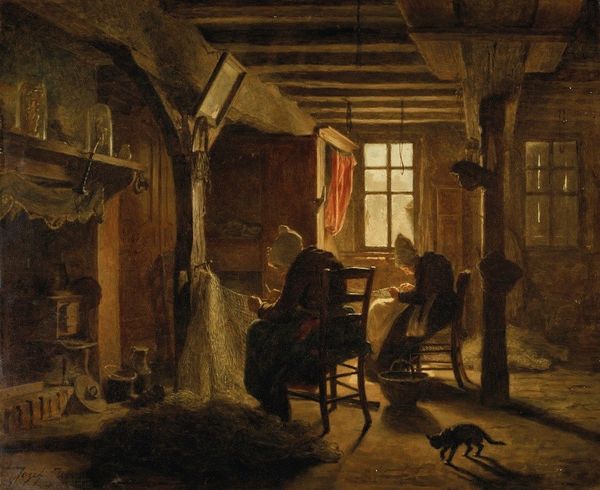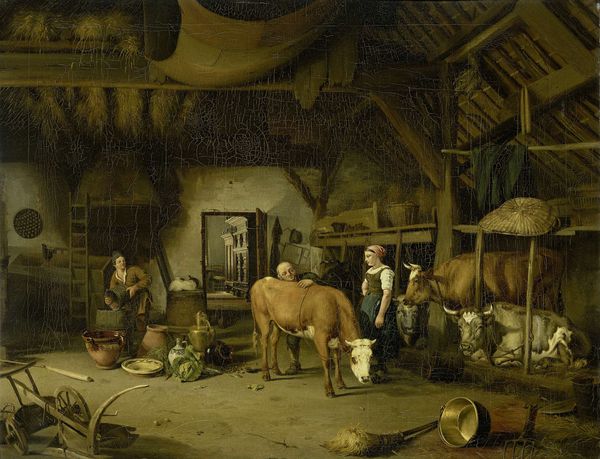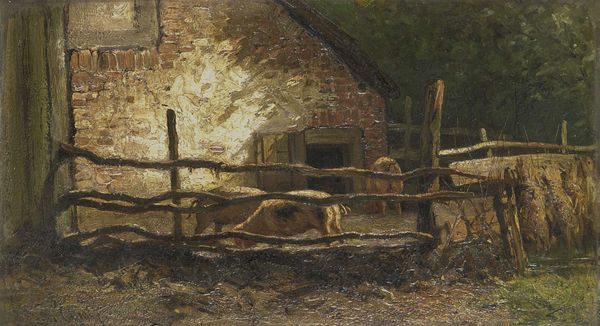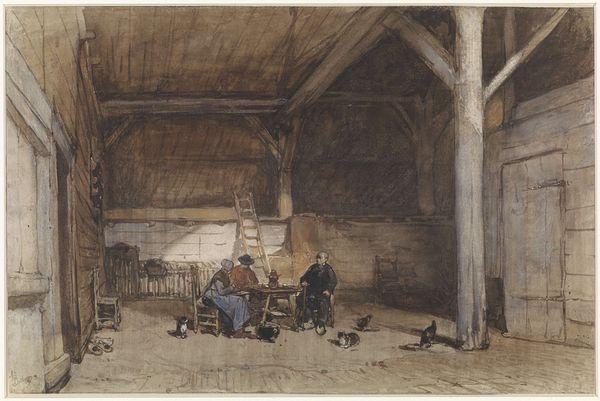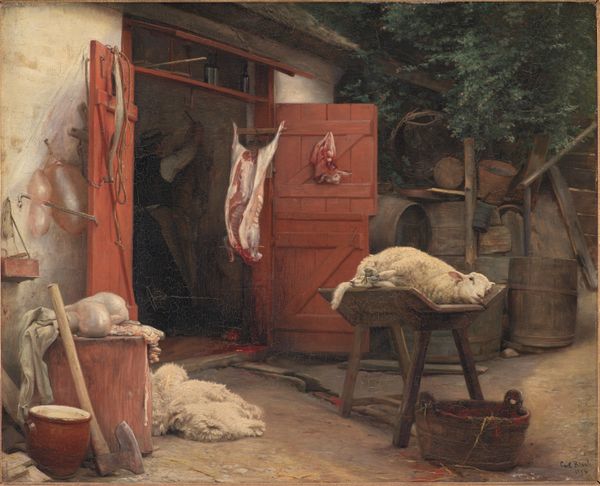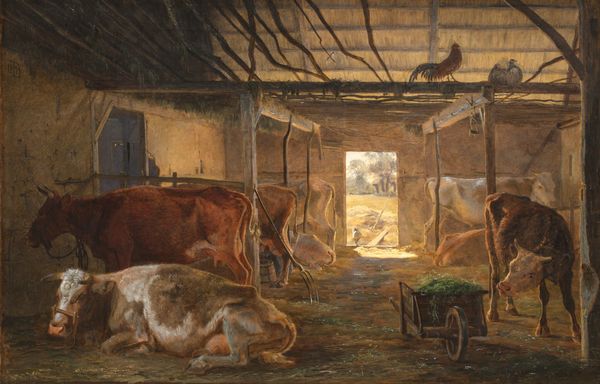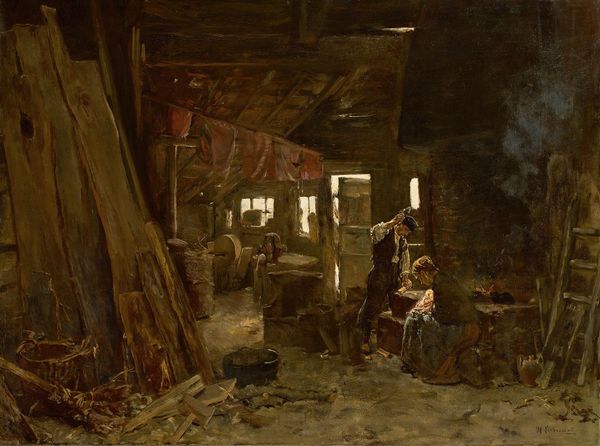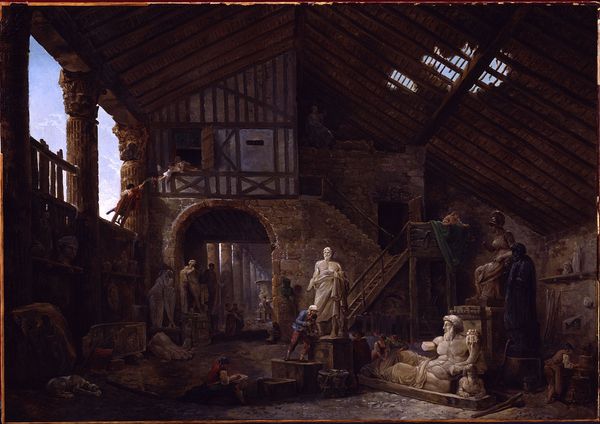
drawing, watercolor
#
drawing
#
landscape
#
watercolor
#
england
#
romanticism
#
genre-painting
#
watercolor
Dimensions: 21 3/4 x 30 in. (55.25 x 76.2 cm) (sheet)30 1/2 x 38 1/2 x 2 3/4 in. (77.47 x 97.79 x 6.99 cm) (outer frame)
Copyright: Public Domain
William Henry Hunt created this watercolor painting, "Interior of a Barn," filled with rustic tools and a young woman, capturing a moment frozen in time. The prominent bales of hay aren't just fodder; they symbolize fertility and abundance, echoing ancient agrarian rituals. Notice the sieve resting against it. Sieves have long been associated with judgment and discernment, as seen in medieval allegories where truth is sifted from falsehood. Reflect on how the simple act of separating grain has been laden with meaning through the ages. In ancient Egypt, winnowing was linked to the afterlife, representing the separation of worthy souls from the unworthy. In our collective memory, the sieve appears in various guises, each time carrying a sense of evaluation. It is a testament to how everyday objects acquire layers of symbolic weight, engaging our subconscious through art. It has morphed and adapted, yet the core idea of sorting endures.
Comments
minneapolisinstituteofart almost 2 years ago
⋮
This highly finished watercolor, one of William Henry Hunt’s largest, is technically astounding. At the International Exhibition of 1862 in London, it was an attraction that, according to one critic, “astonished our foreign visitors.” The setting is a barn owned by Hunt’s father-in-law, a farmer and miller, in Hampshire, England. Hunt achieved a jewellike texture and brilliant luminosity through his complicated technique of stippling transparent colors over a ground of opaque white gouache. This effect is particularly evident in the golden straw and two grain sacks. Also noteworthy is the range of browns discernible in the shadows of the barn.
Join the conversation
Join millions of artists and users on Artera today and experience the ultimate creative platform.
